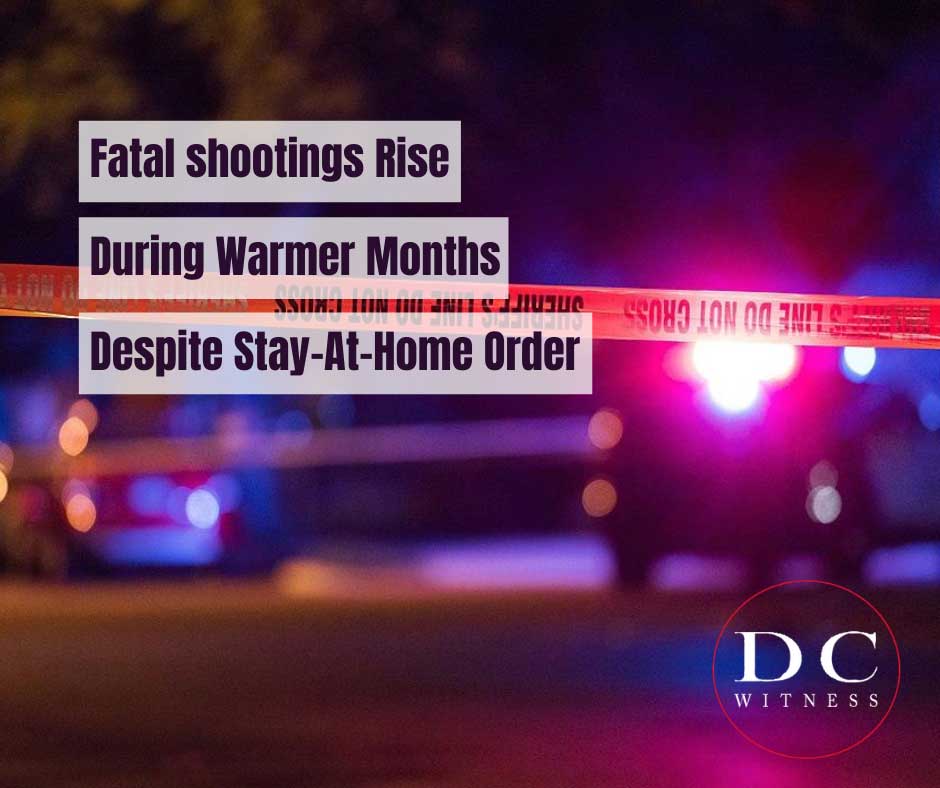
Thank you for reading D.C. Witness. Help us continue our mission into 2024.
Donate NowBy
D.C. Witness Staff
- August 7, 2020
Featured
|
Infographics
|
Homicides increased during the second month of DC’s stay-at-home order that was put into place because of the COVID-19 pandemic, showing a trend that aligns with more crime during warmer months.
From Oct. 1, 2019, to June 30, D.C. Witness recorded 126 homicides. More than 85 percent, 110, of the homicides were gun-related.
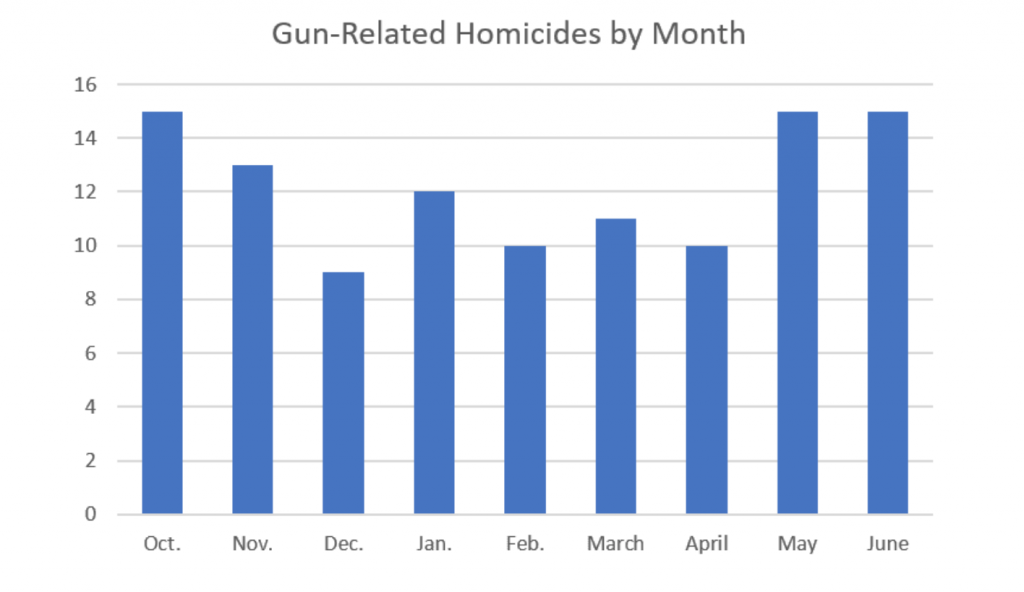
Nearly half of the gun-related homicides during this period occurred in Southeast, DC. According to D.C. Witness data, 51 gun-related homicides took place in the Southeast quadrant, 34 in the Northeast quadrant, 18 in the Northwest quadrant and seven in the Southwest quadrant.
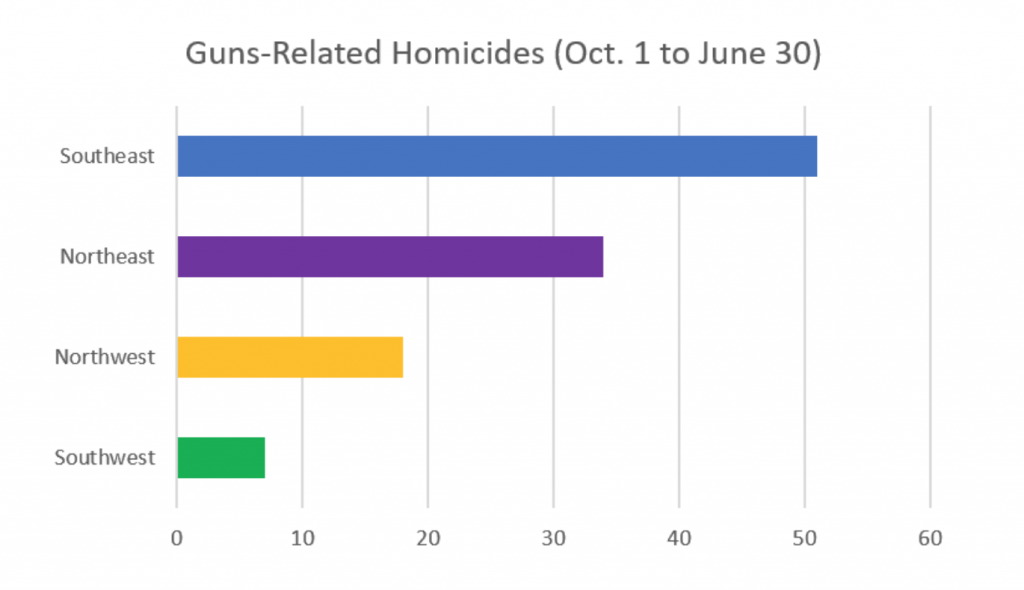
In addition to homicides, other gun-related crimes included armed robbery and assault, possession offenses for firearms and firearm accessories.
There are currently 119 cases for gun-related crimes pending in DC Superior Court.
Gun Crime during Warmer Months
The number of gun-related homicides declined at the start of 2020, but climbed during the summer months, beginning with the second month that D.C. residents were under a stay-at-home order from the coronavirus pandemic.

D.C. Witness data shows an increase from the 10 fatal shooting in April to 15 in May. There were also 15 gun-related homicides in June.
Even though fatal shootings increased from April to May and remained constant in June, there was a reduction in gun-related offenses during this period.
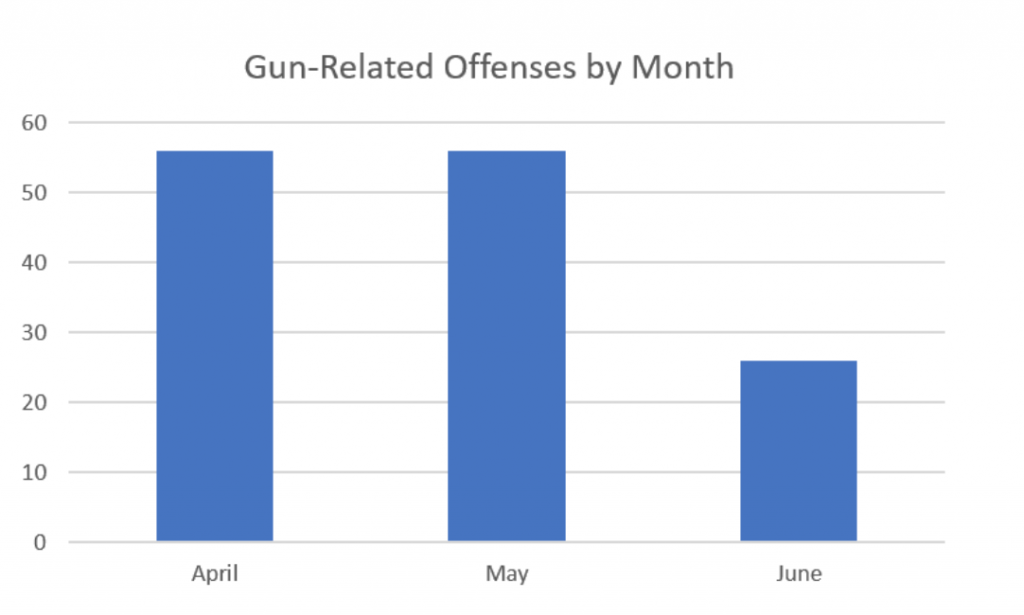
The graph below shows a comparison between fatal shootings in each quadrant of DC and gun-related offenses in those same quadrants from April to June.
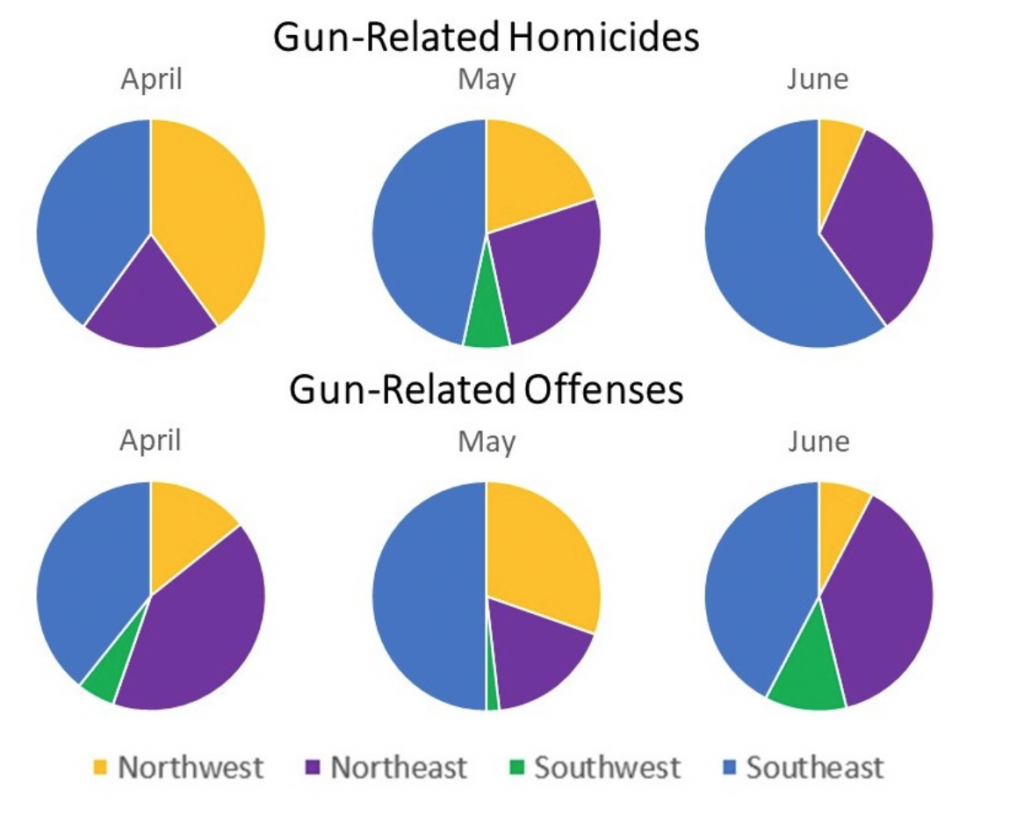
During this period, 29 percent of the 138 gun-related crimes were homicides, according to D.C. Witness data.
Stay-At-Home Order
DC Mayor Muriel Bower enacted a stay-at-home order for residents in response to the coronavirus pandemic from April 1 to May 29.
The number of gun-related homicides during the time of the COVID-19 stay-at-home order was higher than it has been during the same period in previous years.
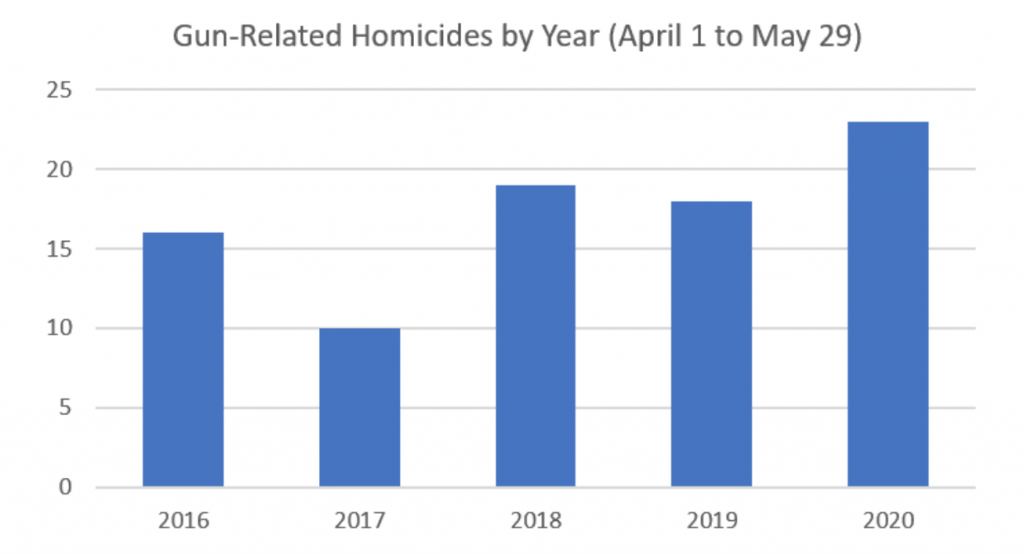
The number of gun-related homicides from April 1 to May 29 grew by 90 percent from 2017 to 2018, fell by 5 percent from 2018 to 2019, but grew again by 27 percent from 2019 to 2020.
While the stay-at-home order was in effect from April 1 to May 29, there were a total of 112 gun-related offenses, 23 of which were homicides. Three of the homicides seem to have been domestic violence.
Two additional homicides occurred in May after the stay-at-home order was lifted.
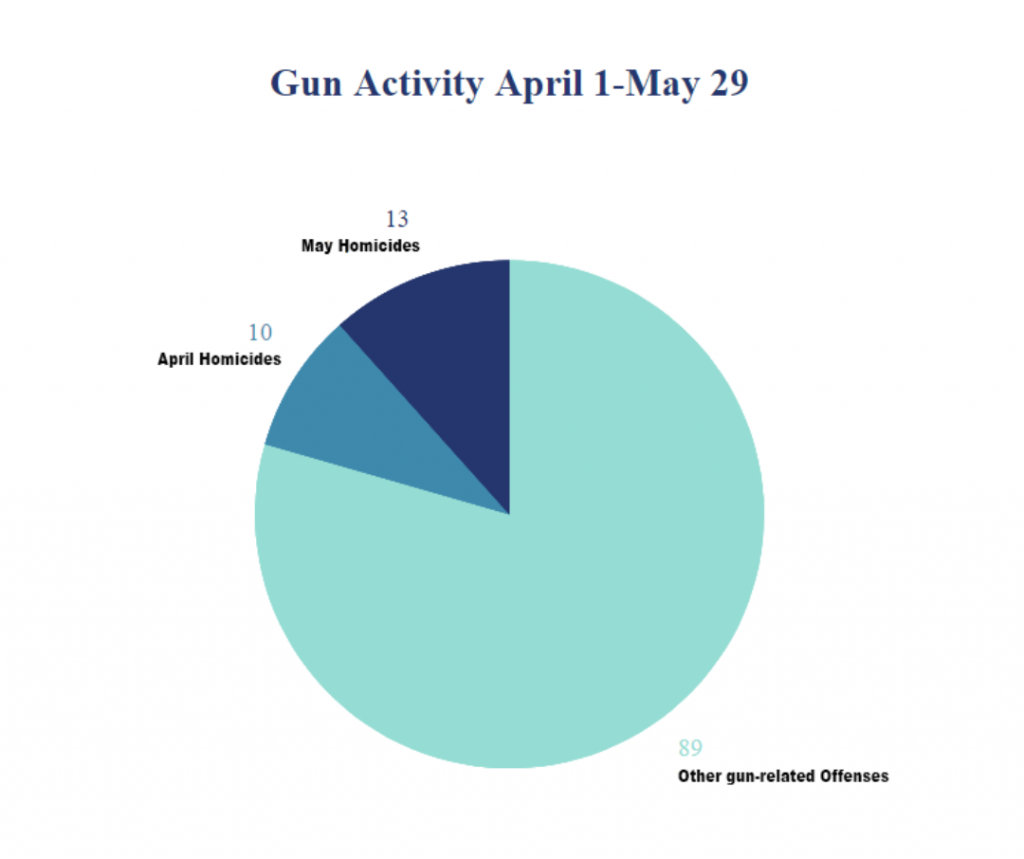
Fatal shootings from April 1 to May 29 accounted for 21 percent of the total number of shooting homicides between Oct. 1, 2019, and June 30.
Firearm Reduction
As part of an effort to stem gun-related crime, the Metropolitan Police Department (MPD) collected 1,412 guns from September 2019 to June 2020.
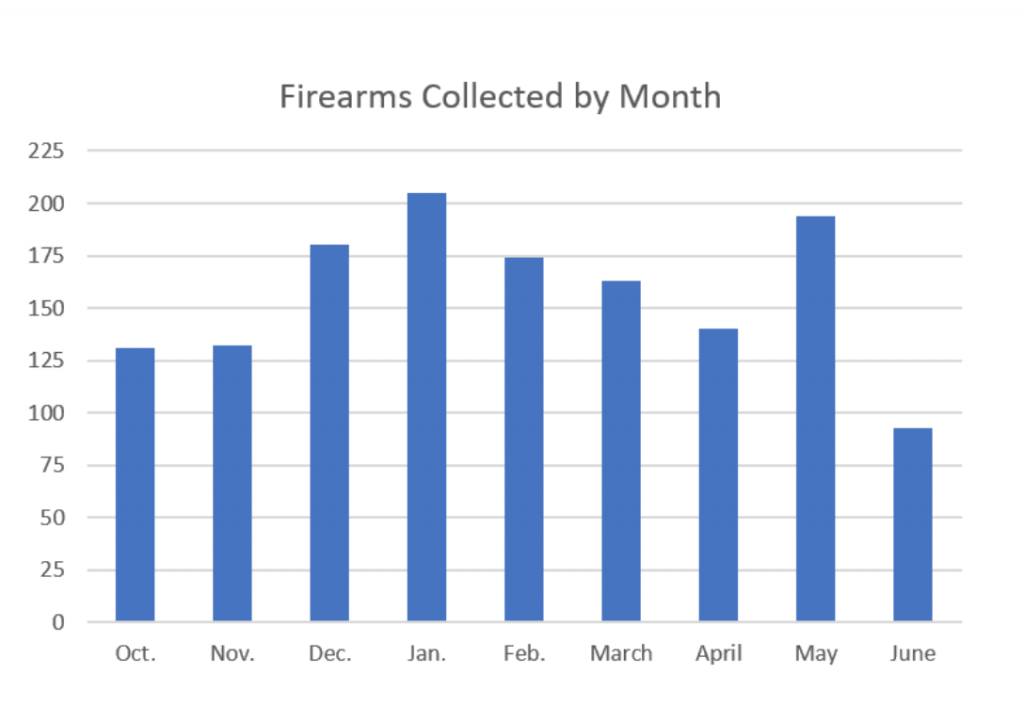
Of the four quadrants in the city from Sept. 30, 2019, to June 29, the most guns were collected in Southeast, DC. Police collected 493 guns in the Southeast quadrant, 299 guns in the Northeast quadrant, 290 guns in the Northwest quadrant and 51 guns in the Southwest quadrant. A quadrant was not listed for 279 of the guns that were collected.

While Southeast DC had the most guns collected, the quadrant also saw the highest number of gun-related homicides. Northwest and Northeast DC had similar rates of gun collection, but the western quadrant had only half as many gun-related homicides as the eastern quadrant.
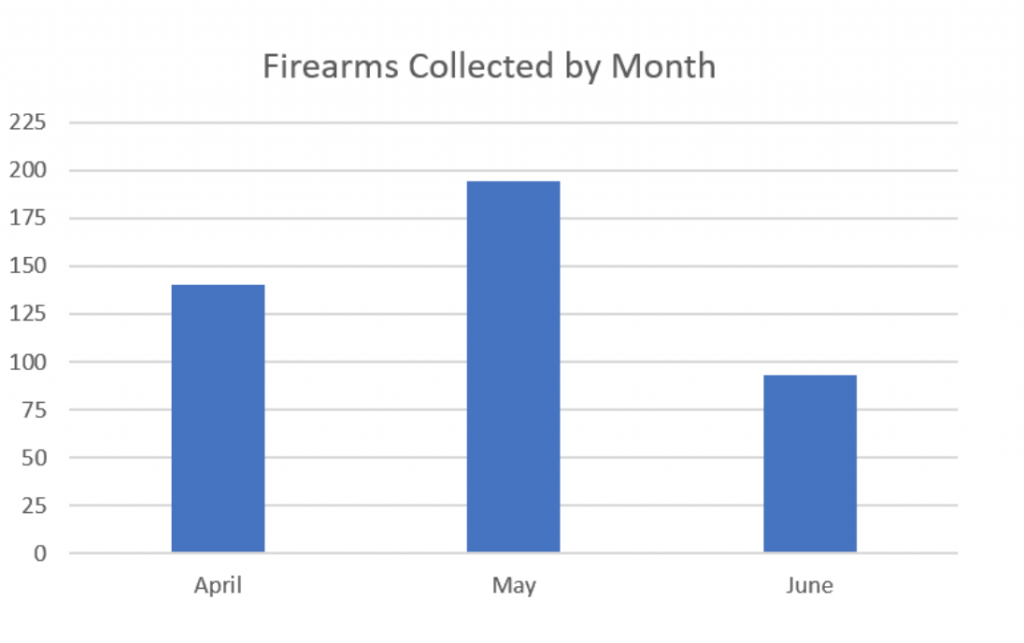
One hundred and sixty-three guns were collected from Southeast DC from April – June, when half of the 40 gun-related homicides happened in the Southeast quadrant of DC.
The MPD collected 82 guns from Northwest DC during that period. The quadrant had eight gun-related homicides from April to June.
Seventy-two guns were collected in the Northeast quadrant, which had 11 gun-related homicides.
Police collected 13 guns in Southwest DC. The quadrant only had one gun-related homicide.
During April and May — when the stay-at-home order was enacted — the MPD collected 334 firearms. According to D.C. Witness data, the police collected 140 guns in April and 194 guns in May.
The number of guns collected during these two months was about 24 percent of the number of guns collected between October 2019 and June 30.
In June, the MPD collected 93 firearms.
Extreme Risk Protection Order
In addition to the recovery initiative, the DC Council also adopted the Extreme Risk Protection Order (ERPO) program.
Since January 2019, family members, domestic partners, police officers, or mental health professionals have been able to petition the D.C. Superior Court to issue an ERPO for the confiscation of guns.
According to the policy, if a judge finds a person could be a danger to themselves or the community, the MPD will temporarily remove firearms and ammunition from the individual’s possession.
The law can allow officers to confiscate weapons or ammunition without the person’s acknowledgment if ordered to do so.
The law also contains an immunity clause, stating that people in possession of guns will not be charged even if the weapon is not legally registered with the District. The clause does not protect an individual if the firearm was used in a crime.
According to an article in the Washington City Paper, the law has gone largely unused due to a lack of awareness.
In 2019, three EPRO requests were filed and in 2020, only one was filed, according to Leah Gurowitz, director of media and public relations at DC Superior Court and DC Court of Appeals.
D.C. Witness reported that, in 2019, an MPD officer asked the court to confiscate firearms from a 45-year-old resident who exhibited erratic behavior when registering a pistol at a police station. The ERPO cited two prior charges as well as a welfare incident report which indicated a “possible mental health condition,” and a suicide attempt that occurred in 2007.
A psychiatrist filed another ERPO request, asking that guns be removed from a patient’s custody. The man allegedly has “a history of borderline personality [disorder] with chronic cutting behavior.” According to the report, the man has tried to harm himself using plastic utensils and broken glass on multiple occasions.
A judge granted two ERPO requests for the man in 2019. However, no guns were confiscated because the patient “was not known to actually have any.”
Editor’s Note: D.C. Witness began collecting data on gun-related offenses since April 1.
Notifications are not yet available for this specific case. Please check back later for updates. Thank you.